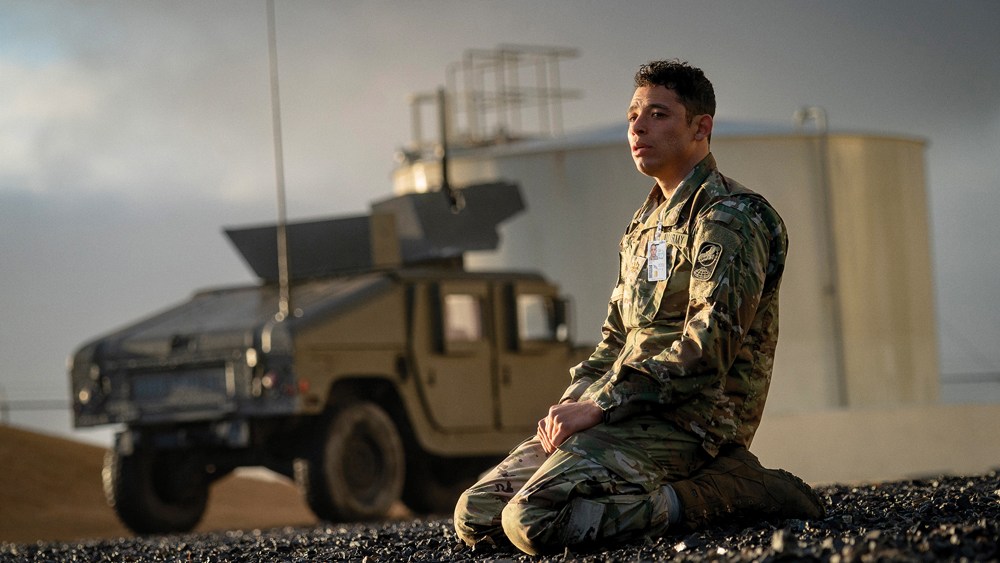Ernest J. Moniz is the 13th U.S. Secretary of Energy and co-chair and CEO of the Nuclear Threat Initiative, a nonprofit, nonpartisan global security organization focused on reducing nuclear, biological, and emerging technology threats that endanger humanity.
Watching the fictional president evacuate Washington in Kathryn Bigelow’s House of Dynamite reminded me of the time I rode a helicopter into the bunker as the energy secretary. Fortunately, my ride was a test drive to ensure government continuity in the event of a nuclear attack. But, as the film emphasizes, one wrong step could go beyond the trial run and destroy civilization.
Bigelow’s plot focuses on what happens when a single nuclear-armed missile of unknown origin is launched toward the United States, setting off a race against time to decide who is responsible and how to respond.
“A House of Dynamite” will premiere on Netflix at a time when there is a well-timed cultural renaissance surrounding nuclear weapons, inspired by Christopher Nolan’s “Oppenheimer,” and ahead of James Cameron’s upcoming “Ghosts of Hiroshima.” It’s also spreading beyond the silver screen, with season 3 of Netflix’s The Diplomat premiering last week and the season 2 finale of Amazon’s record-breaking series Fallout being released on February 5, the day before New START, the last remaining agreement limiting nuclear stockpiles, expires.
These powerful films and shows come at a time when the number of nuclear weapons in the world is expected to rise for the first time in more than 40 years, and they play an important role in reminding people that we live in a real world with 12,000 nuclear weapons, under the constant threat of global catastrophe. Today, nuclear risks are increasing by almost every measure, and many experts agree that the risk of nuclear weapons being used, whether intentionally or by accident, is the highest since the Cuban Missile Crisis of 1962.
With nuclear weapons in the zeitgeist, can culture once again stir public demand for real-world progress?
New evidence has emerged that Bigelow’s shocking thriller will change viewers’ beliefs about nuclear risks. My organization commissioned a study centered around a two-minute trailer for a movie, and 1,000 Americans watched the trailer and 1,000 watched other content. People who watched the trailer were less likely to say that nuclear weapons keep us safe, more likely to want a world without nuclear weapons, more likely to believe that the United States should work to reduce nuclear weapons worldwide, and more likely to say that reducing the risks of nuclear weapons is personally important to them.
There’s a reason why “culture eats strategy for breakfast” is a popular adage. There is ample evidence that culture lays the foundation for policy advancement by changing public beliefs and social discourse, even when it comes to nuclear weapons.
For example, the 1983 television movie The Day After, seen by 100 million Americans, depicted the aftermath of a fictional nuclear attack on Kansas and Missouri and helped Americans reconsider their support for an arms race with the Soviet Union. It also helped change Ronald Reagan’s mind about whether a nuclear war could be won, and helped make arms control treaties possible in the decades that followed. Thanks to these treaties, including the New START Treaty between the United States and Russia, there are now “only” 12,000 nuclear weapons in the world, compared to 70,000.
For many who grew up in the post-Cold War era without the constant fear of nuclear war, these threats may seem distant and unrealistic. For example, a Gen Z colleague came out of a “house of dynamite” and heard a colleague say, “That would never happen.”
Wrong. As someone who has had a front row seat to the reality of nuclear weapons, I want to emphasize that the nuclear system we live in was not built for a messy, complex world. This system depends on the perfect performance of rational humans and machines every day. What is depicted in this movie could happen, and if we continue on our current path, that, or worse, will happen.
So how can we deviate from that path?
A solid first step would be for President Trump to accept Russian President Vladimir Putin’s recent proposal to abide by New START’s numerical limits for another year. President Trump himself said this “sounds like a good idea.” It should then use that time to begin negotiating a follow-on agreement that could reduce its size and address the composition of its nuclear stockpile. A handshake is the first step, but only a new agreement can verify compliance and re-establish regular communication channels that are critical to preventing civilization-ending miscalculations.
There’s more. For example, nuclear-weapon states should follow the United States’ lead in reviewing the security of their stockpiles and command and control systems, especially in the era of rapidly emerging technologies such as AI and cyber threats. On the long journey towards a safer world free of nuclear weapons, no one wants to see a misstep lead to a nuclear holocaust.
Bigelow said he hopes the film will spark dialogue that will lead to the reduction of nuclear weapons. For the sake of humanity’s future, let’s hope this movie wakes people up to the nuclear nightmare that pervades the House of Dynamite and brings our leaders back to the negotiating table.

